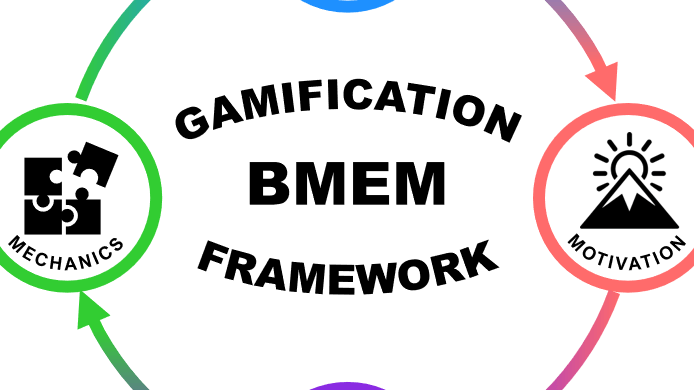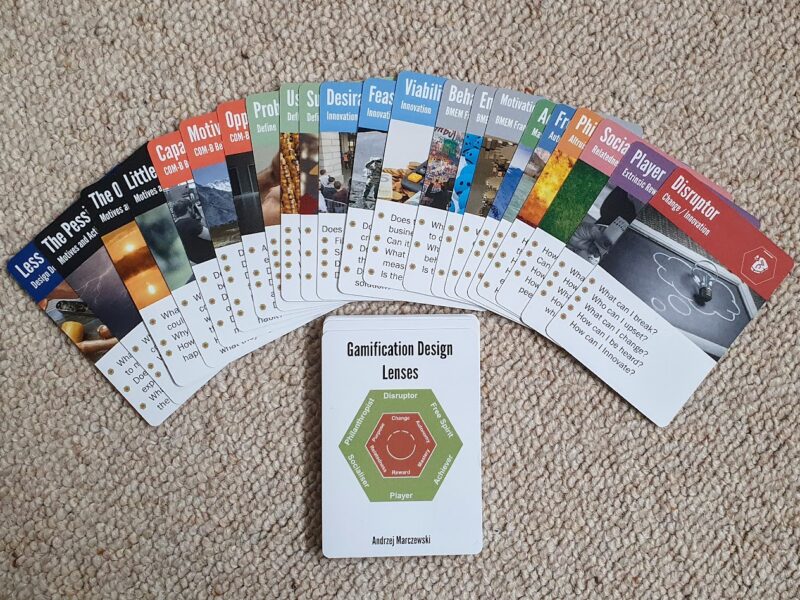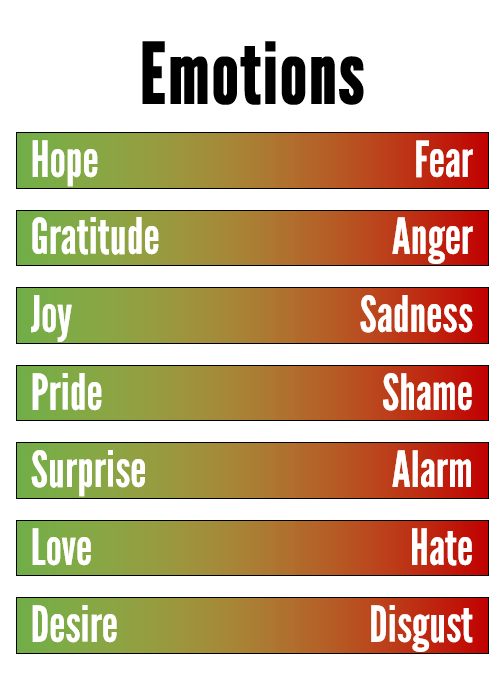You may have noticed in my newest design framework that I mention
emotions for the first time (I think) as a full consideration in my design process. I am by no means the first to think about it in a
design framework. If you look at the MDA framework 1 the authors describe the aesthetics as:
the desirable emotional responses evoked in the player, when she interacts with the game system.
Later a more gamification focused framework, the MDE framework 2, dropped aesthetics and replaced them directly with emotions.
There are many theories and papers written about emotions and what core emotions are etc. I did some research and it is pretty diverse! Aristotle’s De Anima 3 is credited as one of the first sources to mention some sort of formalised core emotions of human beings. Since then many other formalisations have been created 4,5,6,7 with differing views of what form these core emotions. I have chosen a few that I have personally worked with in gamification design, as well as their opposites, which I will come to. But first, what did I choose?
The Emotions
On the positive side of the emotional scale, I went with Hope, Gratitude, Joy, Pride, Suprise, Love and Desire. Their negative counterparts are Fear, Anger, Sadness, Shame, Alarm, Hate and Disgust.
These all sound rather extreme and they are, but they are hand for us from a design perspective.
For instance, you would hope that a gamification solution that relied on a reciprocal economy, elicited feelings of gratitude. However, if you get it wrong, it is handy to know what the opposite could be, anger. People may be angry that there is limited value to them on their side of the deal, for instance.
You would hope that people felt a desire to be involved in the system, but if they don’t they may feel some level of disgust at the thought of being manipulated by it.
People fear the unknown, but with good on-boarding, they may begin to experience hope that the experience will be a good one and they will benefit from it.
Play and games often give players moments of great joy and happiness, gamification should be no different. However, sadness here may not always be negative. If you play a game such as That Dragon Cancer, sadness is part of the experience.
Pride and Shame are both very strong emotions and also key motivators in many gamified experiences. Often, shame is used to push people to act. This can be done in a positive way, if I have not done my steps that day I may feel a stab of shame! However, if I achieve my steps that day or better still, break my record – I will feel great pride in my achievements The key is to not use shame as a weapon – shameification is not cool!
Surprise is something I have spoken about here at some depth in the form of random rewards, easter eggs and the like. Surprises are often nice little bonuses that just make a player smile and feel a little bit of joy as well. However, get things wrong and they can feel alarmed by things happening that they don’t have control over. Unexpected events that have no explanation and no obvious benefits can be unsettling.
Love and hate are fairly self-explanatory and are both extremes of the emotions people are likely to have around your gamified experience. You are more likely to see like and dislike. Either way, it is best o aim for them loving your system over hating it!
In Your Design
In the design process, I put emotions in the BMEM section; Behaviours, Motivations, Emotions and Mechanics. The idea is to understand what behaviours you are seeking from the user, what their motivations might be to behave that way (or not) and then what emotions you want them to experience. This is easier in a game as you are creating true virtual worlds for them to play in. In gamification, you are often limited by how you can communicate your vision to the user, but this should not stop you considering emotions anyway! Well worded messages, meaningful rewards, narrative streams and mini games can all go to build strong emotional responses.
We trade in Human-Centric design, so we have to treat the users of our systems as people. People have feelings and emotions, so we should include them in our designs!
Citations
Hunicke, R., LeBlanc, M. & Zubek, R. MDA: A Formal Approach to Game Design and Game Research. Work. Challenges Game AI 1–4 (2004). doi:10.1.1.79.4561Robson, K., Plangger, K., Kietzmann, J. H., Mccarthy, I. & Pitt, L. Is it all a game? Understanding the principles of gamification. Bus. Horiz. 58, 411–420 (2015).Aristotle On the Soul c.350 B.C.E, translation: J. A. Smith, The Internet Classics Archive, MIT, Retrieved 2 February 2016Izard, C. E., Libero, D. Z., Putnam, P. & Haynes, O. M. Stability of emotion experiences and their relations to traits of personality. J. Pers. Soc. Psychol. 64, 847–860 (1993).Ekman, P. An argument for basic emotions. Cogn. Emot. 6, 169–200 (1992).Nathanson, D. L. Shame and pride : affect, sex, and the birth of the self. (Norton, 1992).Robinson, D. L. Brain function, emotional experience and personality. Neth. J. Psychol. 64, 152–168 (2008). Read More ...



